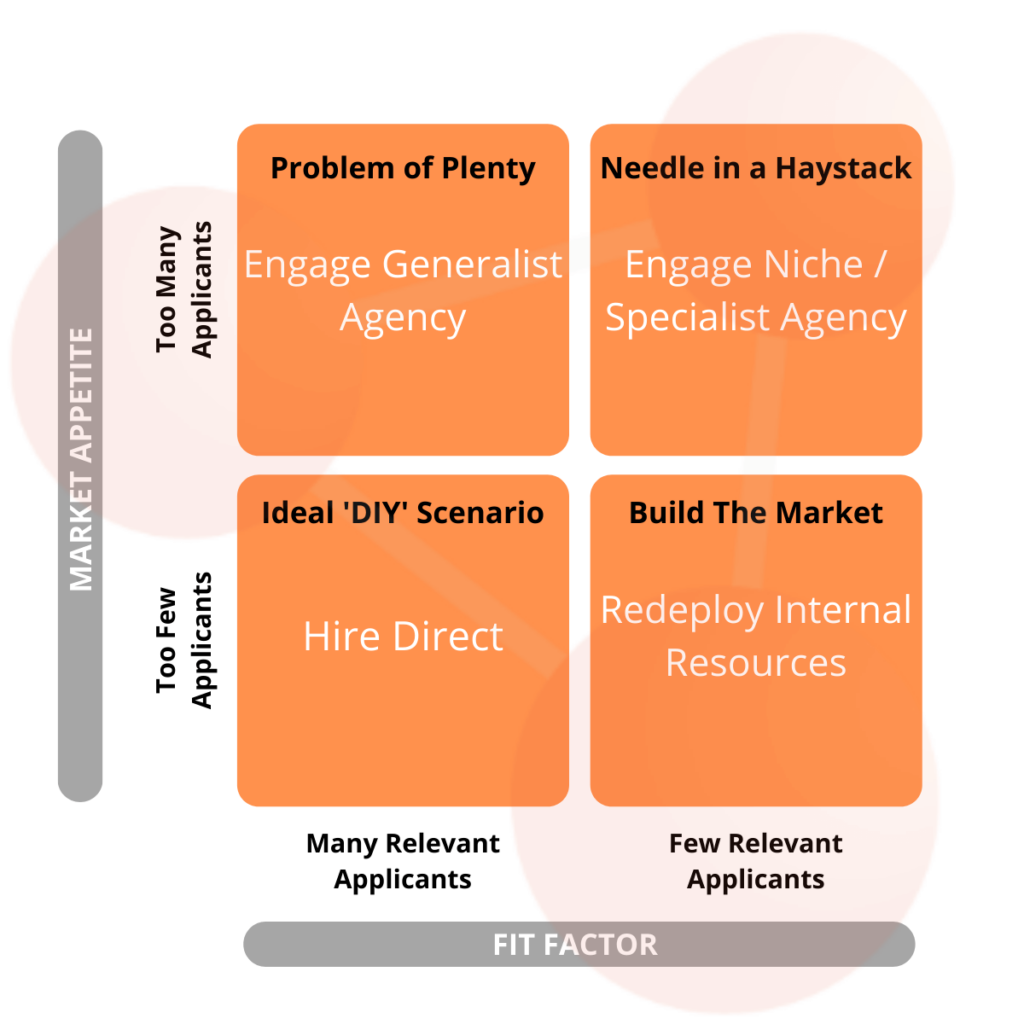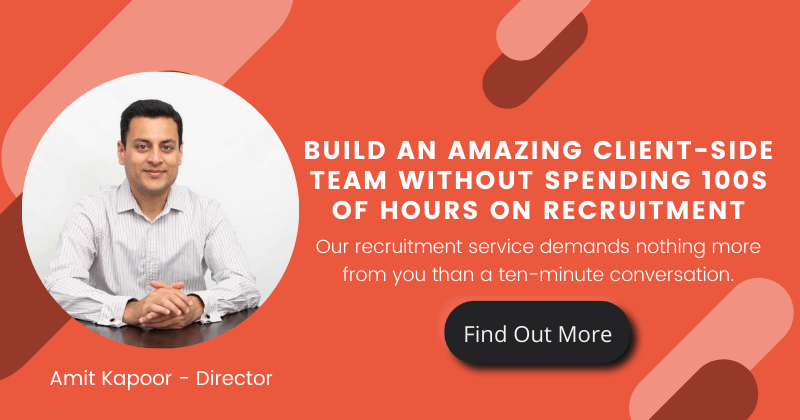What does a Rubik’s cube, a Sudoku puzzle and recruitment all have in common…? They are all time consuming and hard!
However, interim recruitment is a necessary evil because access to on-demand talent is a high value and frequent need for digital transformation programmes.
In fact, “deploying high-calibre talent” is named as one of the six main drivers of digital transformation success by Harvard Business Review.
In business, the most important things are usually the hardest to get right!
Helpfully, we have created a new framework called The Hiring Matrix which will help you choose what strategy to employ depending on the jobs you need filling. And the great news is that it doesn’t always have to be an agency!
To explain what The Hiring Matrix is and how it can aid your recruitment decision making, we’ve created this blog post.
What is The Hiring Matrix?
The Hiring Matrix is a framework to help organisations identify how they should hire candidates. For example, should you engage an agency, hire direct, or redeploy internal resources? Well, it all depends on the Fit Factor and Market Appetite…
The Fit Factor (shown on the X-axis) depicts how relevant applicants are, i.e. does the job application meet the job requirements?. The two categories here are “many relevant applicants” and “few relevant applicants”.
While the Market Appetite (shown on the Y-axis) depicts the overall number of applicants. The two categories here are “too few applicants” and “too many applicants”.

Here are the 4 generic strategies…
1) Problem of Plenty (too many applicants & many relevant applicants) – With too many applicants it would take you too long to filter through all the CVs. Instead, this task should be outsourced out to an agency to save time and money.
2) Ideal ‘DIY’ Scenario (too few applicants & many relevant applicants) – As there aren’t many CVs to filter through, you should direct hire candidates as it won’t take up much of your time – and you can save on agency fees!
3) Needle in a Haystack (too many applicants & few relevant applicants) – It is best practice to use a specialised recruiter who can cut through the noise and find the few hidden gems. Unlike a standard agency that will use search with keywords, a specialised recruiter will use their intuition to pick out the most relevant applicants.
4) Build the Market (too few applicants & few relevant applicants) – This is the most difficult scenario you’ll be faced with! The market will need to be built which will encompass you redeploying / retraining resources.
Getting recruitment right – 4 things to bear in mind
Before you get started with your interim recruitment strategy, there are 4 things you should bear in mind when using The Hiring Matrix.
1) Be specific on the candidate you want
For high applicant roles, such as “Project Manager” and “Business Analyst”, hirers can choose to be more prescriptive and nuanced on who they want.
This serves the dual purpose of giving the hirers just the right skills they need for the job, but it also creates a mechanism for recruiters to whittle down applications fairly.
2) ‘Hiring direct’ is time-consuming
‘Hiring direct’ may appeal to a lot of hiring managers, yet programme staffing is very time consuming. For example, for our leading Central Government client, the numbers worked like this:
- Building a Contingent Labour case – 2 hours
- Presenting the case to the external resources Governance Board – 1 hour
- Briefing in-house recruitment channel – 0.5 hours
- Reviewing CVs – 1.5 hours
- Interviewing candidates – 4 hours
- Liaising with the recruitment partners and PMO for onboarding – 2 hours
Is any of this spent time re-usable for your next hire through the same route? 10+ hours per role is not out of the norm. In our view, when recruiting role-by-role, very little of the time is actually reusable.
As a result, we are advocates of outsourcing recruitment so you can spend MORE of your time on programme delivery, i.e. business change and stakeholder alignment.
The fact is that a lot of the work that happens in recruitment is perfectly capable of being outsourced; as long as the recruiter ‘gets’ the hiring manager’s perspective of an ideal hire.
Still not convinced?
Check our our blog article, Common Concerns about Outsourcing your Recruitment, where we look at some of the most common fears that people have about outsourcing their recruitment and give you our response to them.
3) Pay a fair price to build the market
If there is no market of candidates, it’s not necessarily because talent does not exist. It could be because the role is not fairly remunerated.
Remember that the best contractors will always have an available pool of job offers which they can accept, so they are unlikely to accept a poor offer in the first instance.
Furthermore, a candidate may grudgingly participate in your campaign in the absence of anything better – but as soon as a better offer comes along they are likely to jump ship right away!
Therefore, the option to redeploy and retrain internal resources must be weighed against paying fair market rates for ready-to-use talent. Often, in the short term at least, it may be cheaper to pay fair rates.
In our blog post, High Volume Recruitment – How to Get it Right, offering a fair market rate was one of our four strategies for getting high volume recruitment right.
4) The ‘Problem of Plenty’ causes plenty of problems
The issue with ending up with the ‘Problem of Plenty’ is that a recruiter feels at liberty to take a factory approach with junior staff carrying out sift and screen.
Therefore, they will form a judgment on how the candidate comes across, and not on how strong a fit the candidate is to the role.
In reality, it’s very difficult to appraise recruiters in the ‘Problem of Plenty’ space. Although they would appear to get it right, you would never know who you have missed out on.
Is there a solution to this?
Yes, in our opinion, try and follow approach 1 of being specific in the first instance. You may fail in getting the right candidates in front of you, but if so, you will fail fast on a ‘Needle in a haystack’ basis. Meaning, you will have time to consider either broadening your spec, or trying out a different agency.
Where does Mindful fit in?
Here at Mindful, our sweet spot is ‘Needle in a Haystack’. As a reminder, this is where you have too many applicants & few relevant applicants!
With our experience of working on (as against, merely, recruiting for) transformation programmes, we understand our clients’ problems intuitively.
Our clients find it particularly satisfying that they don’t have to dumb down the requirements to something we can understand. And that, they can get their ideal hire after 2-3 interviews, when they would otherwise do 7.
Check out our Programmes Interim Service, and feel free to get in touch, to see if we can help!

